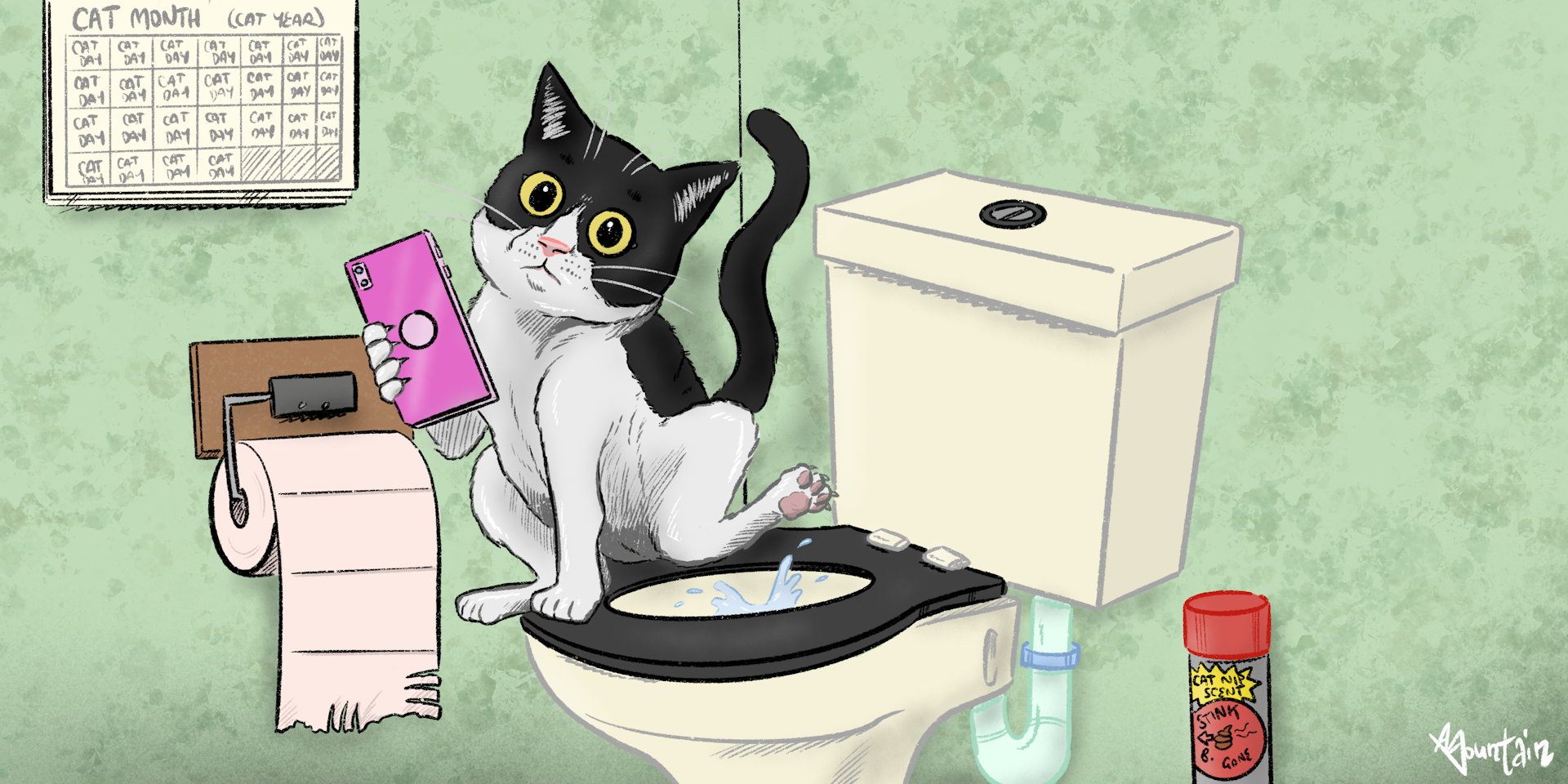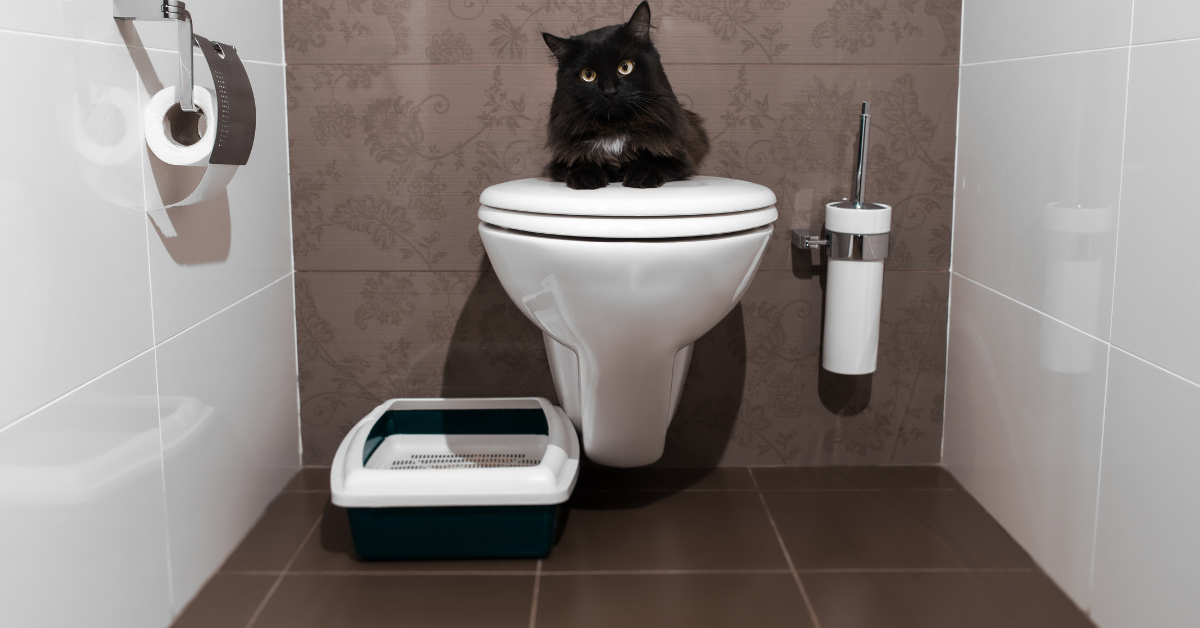Prevent Plumbing Problems: Never Flush Cat Poop Down Your Toilet - Professional Guidance
Prevent Plumbing Problems: Never Flush Cat Poop Down Your Toilet - Professional Guidance
Blog Article
What are your thoughts and feelings about How to Dispose of Cat Poop and Litter Without Plastic Bags?

Introduction
As pet cat proprietors, it's necessary to bear in mind just how we get rid of our feline friends' waste. While it might seem practical to purge feline poop down the commode, this practice can have destructive effects for both the environment and human wellness.
Environmental Impact
Flushing pet cat poop introduces dangerous pathogens and parasites right into the water supply, presenting a considerable threat to aquatic environments. These impurities can negatively affect aquatic life and compromise water quality.
Health and wellness Risks
Along with environmental problems, purging cat waste can likewise posture health risks to people. Pet cat feces might contain Toxoplasma gondii, a parasite that can trigger toxoplasmosis-- a possibly extreme ailment, especially for expecting women and individuals with weakened immune systems.
Alternatives to Flushing
Thankfully, there are more secure and much more liable ways to dispose of cat poop. Take into consideration the adhering to alternatives:
1. Scoop and Dispose in Trash
The most typical approach of dealing with feline poop is to scoop it into an eco-friendly bag and toss it in the garbage. Make certain to make use of a dedicated litter scoop and dispose of the waste quickly.
2. Use Biodegradable Litter
Choose naturally degradable feline trash made from products such as corn or wheat. These litters are environmentally friendly and can be securely disposed of in the garbage.
3. Bury in the Yard
If you have a backyard, take into consideration hiding cat waste in a designated location away from veggie gardens and water sources. Make sure to dig deep enough to avoid contamination of groundwater.
4. Mount a Pet Waste Disposal System
Buy a pet dog waste disposal system especially created for pet cat waste. These systems make use of enzymes to break down the waste, lowering smell and environmental influence.
Verdict
Accountable animal ownership extends beyond supplying food and shelter-- it also involves correct waste management. By avoiding purging feline poop down the toilet and going with alternate disposal techniques, we can lessen our ecological footprint and protect human wellness.
Why Can’t I Flush Cat Poop?
It Spreads a Parasite
Cats are frequently infected with a parasite called toxoplasma gondii. The parasite causes an infection called toxoplasmosis. It is usually harmless to cats. The parasite only uses cat poop as a host for its eggs. Otherwise, the cat’s immune system usually keeps the infection at low enough levels to maintain its own health. But it does not stop the develop of eggs. These eggs are tiny and surprisingly tough. They may survive for a year before they begin to grow. But that’s the problem.
Our wastewater system is not designed to deal with toxoplasmosis eggs. Instead, most eggs will flush from your toilet into sewers and wastewater management plants. After the sewage is treated for many other harmful things in it, it is typically released into local rivers, lakes, or oceans. Here, the toxoplasmosis eggs can find new hosts, including starfish, crabs, otters, and many other wildlife. For many, this is a significant risk to their health. Toxoplasmosis can also end up infecting water sources that are important for agriculture, which means our deer, pigs, and sheep can get infected too.
Is There Risk to Humans?
There can be a risk to human life from flushing cat poop down the toilet. If you do so, the parasites from your cat’s poop can end up in shellfish, game animals, or livestock. If this meat is then served raw or undercooked, the people who eat it can get sick.
In fact, according to the CDC, 40 million people in the United States are infected with toxoplasma gondii. They get it from exposure to infected seafood, or from some kind of cat poop contamination, like drinking from a stream that is contaminated or touching anything that has come into contact with cat poop. That includes just cleaning a cat litter box.
Most people who get infected with these parasites will not develop any symptoms. However, for pregnant women or for those with compromised immune systems, the parasite can cause severe health problems.
How to Handle Cat Poop
The best way to handle cat poop is actually to clean the box more often. The eggs that the parasite sheds will not become active until one to five days after the cat poops. That means that if you clean daily, you’re much less likely to come into direct contact with infectious eggs.
That said, always dispose of cat poop in the garbage and not down the toilet. Wash your hands before and after you clean the litter box, and bring the bag of poop right outside to your garbage bins.
https://trenchlesssolutionsusa.com/why-cant-i-flush-cat-poop/

Do you enjoy reading about Don’t flush cat feces down the toilet? Post a short review directly below. We will be delighted to find out your thoughts about this entry. We hope to see you back again soon. Do you know anybody else who is occupied with the subject? Do not hesitate to promote it. We enjoy reading our article about Can You Flush Cat Poo or Litter Down the Toilet?.
Website Report this page